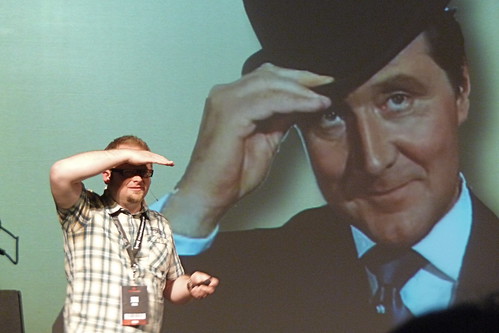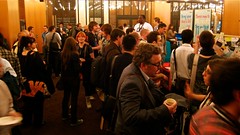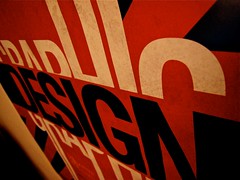It was a predictably wet day in Belfast. I made my way into the town centre, passing large banners proudly displaying the Build identity, and met other Buildees for a co-working session.
Over the course of the day we had interesting discussions about our approaches and challenges with our work as web designers. Responsive design was a topic we returned to often, discussing our solutions to the challenges of the design process and especially prototyping designs in a responsive way.
The hub of Build was the Black Box where that afternoon some designers talked about their passions outside of work. I am obsessed with making things, and although I love my job I am rarely on a computer after work or on the weekends. This multi-disciplinarily creative approach was a real focus at Build and permeated everything. (Why else hold an axe-making workshop at a web design conference?) The afternoon talks were a really honest glimpse into their creativity outside of work and it was fascinating to see how that varied and where it met their designs.
Oh, and that night our team came second in the Standardista’s Open Book Exam. Sweet.
The next day everyone gathered at the Waterfront for the full conference day. The talks remained on topic with the Build theme: creativity filled with passion and craftsmanship. There was a strong sense of the web entering a more mature phase of development and what that may mean as we map out a new era.
Mandy & Tiffani came from content backgrounds, but their talks on editing and being true to yourself should be applied cross-discipline. Reshaping a work while remaining true to it and telling an honest story about yourself are both super relevant to all of us.
Kirby’s talk, Everything is a Remix, was really reassuring about the critical stage of reusing that happens in creative processes. Let’s face it, we all do it, but it can often result in feeling that we are not ‘creative enough’ as we appropriate other people’s work. Remixing is an inevitable part of idea generation and should be used to enhance the source and the result.
Jeff Veen is a natural storyteller. His engaging talk about his teams at Typekit had so much in common with the team I’m part of at uSwitch, I feel really fortunate to make that statement. His final topic of Design/Product Reviews was really helpful as it’s an area we haven’t got right yet (evident in all of ourinconsistencies) and I’ve come away with some great ideas to try with the design team.
Ethan’s talk at the end of the day was super relevant to a project we’re working on with Restless Development in Uganda, where our audience could very well be in rural areas using a shared mobile phone accessing our service via WAP or SMS. By having such strict technical requirements it forces you to focus the service and full accessibility is a must. But even with our other projects – where I’m loving creating such image-rich designs – we have to remember that a significant number of our visitors are struggling on Edge mobile internet or overloaded broadband connections and they won’t see what I’ve lovingly laid out in Photoshop. I have to be ok with that – but how do I balance it with striving for quality experiences? Does quality just become relative?
The Build experience has been fantastic – we’re all buzzing and have a lot to continue thinking about, discuss and explore. Build 2013 is the final year for this amazing conference, make sure you get your ticket!
The beautiful photos on this page are by Al Power.












 Today I went off to
Today I went off to